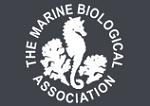APHOTOMARINE
An educational resource dedicated mainly to the photography
and diversity of marine life that can be found in coastal waters
and intertidal areas of Great Britain and Ireland by David Fenwick.

Distomus variolosus
- enlarged open sea squirts on kelp holdfast 1
Lesser gooseberry sea squirt
Distomus variolosus
- enlarged open sea squirts on kelp holdfast 2
Lesser gooseberry sea squirt
Distomus variolosus
- enlarged open sea squirts on kelp holdfast 3
Lesser gooseberry sea squirt
Distomus variolosus
- on kelp stipe out of water 1
Lesser gooseberry sea squirt
Distomus variolosus
- on kelp stipe out of water 2
Lesser gooseberry sea squirt
Distomus variolosus
- on kelp stipe out of water 3
Specimens / colony found on a newly washed-up kelp stipe on the shore at Chimney Rocks, Penzance, Cornwall, 04.12.17.
Lesser gooseberry sea squirt
Distomus variolosus
- on kelp site 1
Lesser gooseberry sea squirt
Distomus variolosus
- on kelp stipe 2
Lesser gooseberry sea squirt
Distomus variolosus
- on kelp stipe 3
Specimens / colony above was found on a kelp stipe washed-up at Sennen Cove, Cornwall, 10.11.10.
Lesser gooseberry sea squirt
Distomus variolosus
- on flotsam 1
Lesser gooseberry sea squirt
Distomus variolosus
- on flotsam 2
Specimens above were found on an Ink well crab pot that was washed-up at Long Rock Station, near Marazion, Cornwall, 07.01.14.
Lesser gooseberry sea squirt
Distomus variolosus
- juvenile on kelp holdfast 1
Lesser gooseberry sea squirt
Distomus variolosus
- juvenile on kelp holdfast 2
Lesser gooseberry sea squirt
Distomus variolosus
- juveniles on kelp holdfast 1
Specimens above found on a holdfast of Laminaria sp., Kelp on the extreme lowershore at Wherry Rocks, Cornwall, 02.08.15.
Lesser gooseberry sea squirt
Distomus variolosus
- under a rock in a pool 1
Lesser gooseberry sea squirt
Distomus variolosus
- under a rock in a pool 2
Specimens above were found under a rock in a pool on the extreme lowershore at Chimney Rocks, Penzance, Cornwall, 05.08.16.
A common species across Devon and Cornwall, can be found under and on rocks on the lowershore; on hard substrate, or more commonly attached to the stipes of kelp, either when it's attached or when washed-up on the strandline after a storm.
APHOTOMARINE supports open source data recording and sharing for the benefit of wildlife, recorders, research, science and education. The project recommends the following websites and works with the following bodies and organisations.
The Marine Biological Association or MBA, based in Plymouth, is one of the world’s longest-running societies dedicated to promoting research into our oceans and the life they support. Since 1884 the MBA has been providing a unified, clear, independent voice on behalf of the marine biological community.It has a growing membership in over 40 countries.
The National Biodiversity Network or NBN is a charity that supports open source data sharing and recording supporting conservation, science and education. "Why do recorders need open source?". Simply because it supports the core values of wildlife recording and the free use of records and data over a very wide network that includes partners like the Natural History Museum.
The taxonomy used here is based on that of the following database, which is also used by the MBA, NHM and the NBN.
The World Register of Marine Species or WoRMS.

